May 22, 2025 | 15:57 GMT +7
May 22, 2025 | 15:57 GMT +7
Hotline: 0913.378.918
May 22, 2025 | 15:57 GMT +7
Hotline: 0913.378.918
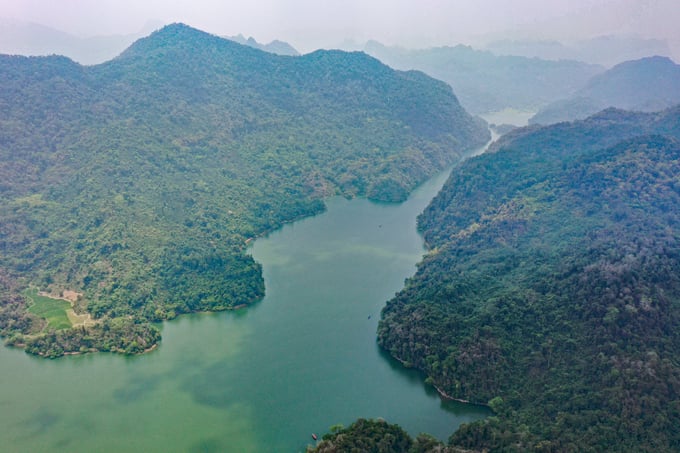
A corner of Ba Be lake. Photo: Tung Dinh.
It was only the beginning of May, but the sun was already scorching hot. Sitting on a high-rise car for dozens of kilometers along Provincial Road 254, starting from near the Ba Be National Park office to the pier, everyone was drenched in sweat, wishing to be like the rows of bamboo on the other side of the cliff.
"It's said that El Nino is active this year, so it would be very hot," Trieu Van Hinh, from Bo Lu village, Nam Mau commune, Ba Be district (Bac Kan) genially greeted us. Perhaps it became a habit, the young Tay guy did not let guests wait for long. His mouth talking, hands doing, feet walking, the 24-year-old quickly led the group down to Ba Be lake - the “emerald” lying deep in the mountains of Viet Bac.
Sandwiched between two arches of Gam river and Ngan Son, Ba Be lake is meandered into three small lakes, namely Pe Lam, Pe Lu and Pe Leng. Many large and small islands are scattered in the middle of the lake, creating small forests.
People say that Ba Be Lake is almost separate from the outside. Surrounding the lake are limestone mountains mixed with ancient sandstone with an altitude of over 1,000 m. There are also primeval old forests which contain more than 1,000 species of fauna and flora, and many of which are rare and of great significance to biodiversity.
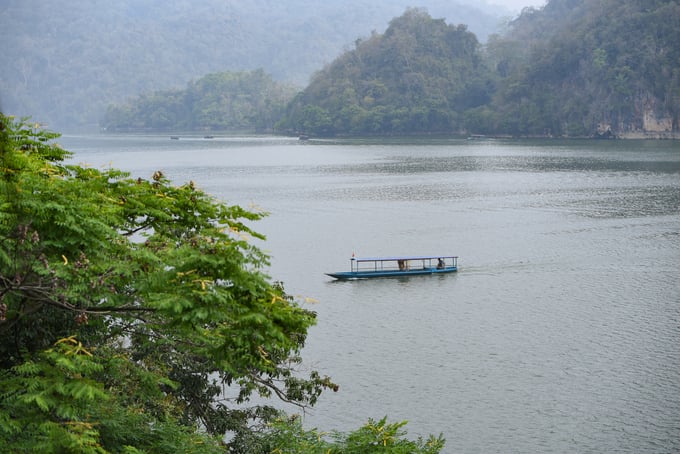
Boats leisurely taking tourists to witness the beauty of Ba Be lake. Photo: Tung Dinh.
Bringing the desire to find the best time to take pictures of the lake to Kim Xuyen, the owner of the restaurant where we docked the boat, we just realized that we might have to stay here for another few more days.
“Ba Be is always a beauty,” Xuyen said. The day started early in a hazy mist, with the magical scenery interwoven with the sound of birdsong and animals calling the flock. At noon, Ba Be lake looks like an alluring ink wash painting under the sun. The lake's surface glitters with the silhouettes of mountains and clouds. And in the late afternoon, the pink light of the sky covers the mountains and hills, making every person visiting the lake feel as if he is one with nature.
A few years ago, people around the lake still used dugout canoes to move between the islands. The boat was carved from the trunk of a tree and had only one oar. It was the preferred means of transportation for lake residents to the Nang River, Pac Ngoi village, or upstream Nam Cuong stream to the North of Cho Don district. Sometimes, dugout canoes were used for fishing, collecting firewood, and even for children to go to school. Now, lake bed tourism is thriving.
We looked around in the middle of over 600 ha of water surface area, only to see a few dugout canoes erected in the corner, standing as if they were research or collectible specimens of an archaeologist who suddenly became interested in finding about the old value of Bac Kan scenic spot. In contrast, motorboats are almost everywhere. Every 10 minutes, our group would encounter a motorboat running in the opposite direction, stirring up the clear green water.
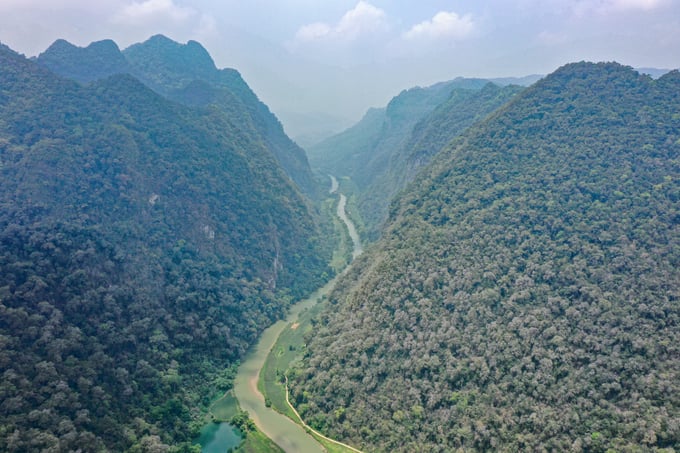
Nang River weaves between the mountains and forests of Bac Kan to reach Tuyen Quang. Photo: Tung Dinh.
From the pier where we got off, the section near Nam Mau Commune People's Committee to Dau Dang waterfall was an estimated 12 km by waterway. About two-thirds of the way there, I saw something strange. The river water, which was dark green, suddenly turned yellow. At times, the water was turbid, as if several hundred mirror carps and Bangana lemassoni had just swam past.
Approaching the signboard “4 km to Dau Dang waterfall”, the water level seemed to be only 2 - 3 m high, equal to 1/10 of the average depth of the lake. In the middle of the stream, a large spiral whirlpool swept the leaves back to the north.
It turned out that this was the confluence between Ba Be lake and Nang river. The river was made up of many small streams in Bao Lac and Bao Lam districts (Cao Bang) and Pac Nam district (Bac Kan). The two upstream branches of Nang river were the natural boundary between Cao Bang and Bac Kan, stretching for hundreds of kilometers and then flowing into Tuyen Quang province and converging with Gam river in Na Hang district.
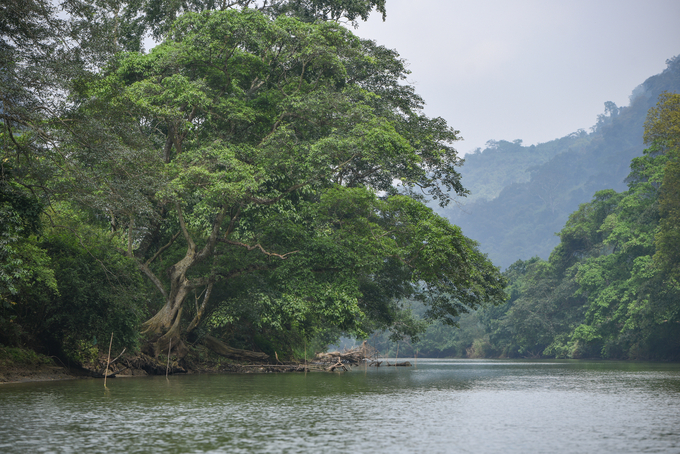
The row of trees dropping their shadows on the surface of Nang river. Photo: Tung Dinh.
Nang river poetically flowed through narrow bends in the cave, under the curtains of stalactites, but it was strange that it did not give Ba Be lake a drop of water. Some people said that Nang river had dried up due to climate change, others said that the river bed had been deposited a lot, so the water level was always lower than the lake. No one knew exactly why, but looking at the banks of the river, it was true that they keep reaching out.
Hinh said that visiting Nang river route - Ba Be lake was no longer as easy as before because it was easy to run aground and crash into reefs. Having 6-7 years of experience like Hinh, but because he listened to our wish to get some documentary footage, the boat fell into the state of "can't go up, can't get down". So the men in the group had to roll up their pants up to their knees, jumped into the cool water, and joined forces to bring the boat back on track.

Buffaloes soak in the cool water at the end of Ba Be lake. Photo: Tung Dinh.
Ba Be lake’s beauty not only lies in its majestic nature but also in its attractive customs, practices and culinary culture.
During the last ten years, thanks to the attention of the Bac Kan authority, homestay-style resorts have sprung up like mushrooms around the lake. Tourists can immerse themselves in life, activities, and stay with families living in the village, enjoy a lot of mountain-style dishes, even participate in dances by the flickering fire under the roof of a traditional stilt house and sip a cup of pungent corn wine.
Among the many festival activities of locals around the lake, the most famous one is Ba Be Spring Festival - the biggest festival of the year in Bac Kan province. The festival takes place on January 9 - 11, with the highlight being a bullfight on the 10th.
In order to participate in the competition, fighting bulls must pass a selection round from the villages. Before the competition, fighting bulls still plow as usual. Early on the day of the competition, the new cows were "dressed" properly and led to a flat field, covered with young grass. In the form of a round-robin competition, the one who wins the most will receive a prize. And no matter what rank, the bull would then return to the owner to serve the fields.
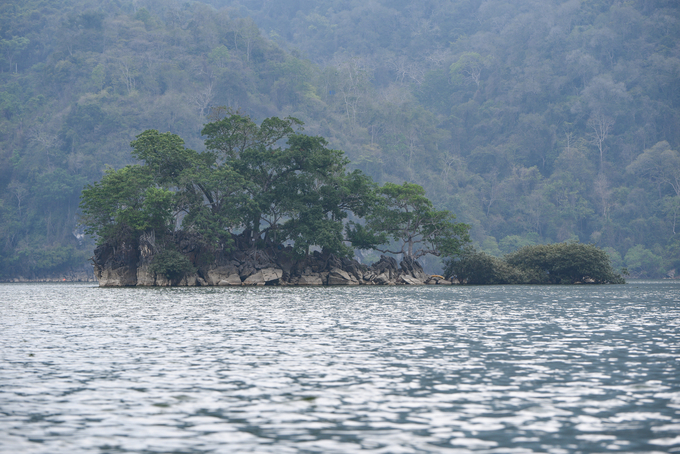
Ba Goa Island on the surface of Ba Be lake. Photo: Tung Dinh.
Ba Be Lake has always had a peaceful and magical look for many generations. That beauty comes from the clear emerald-green water floating between the clouds, the mountains and the forests, to the sedimentary caves with thousands of stalactites of different unique shapes tilting down from the steep cliffs.
Translated by Samuel Pham
![Reducing emissions from rice fields: [3] New values generated from carbon credit](https://t.ex-cdn.com/nongnghiepmoitruong.vn/608w/files/content/2025/05/19/dsc09613-144700_71-150957.jpg)
(VAN) In addition to helping safeguard the environment, the low-emission rice cultivation model also generates new opportunities for farmers by leveraging the carbon credit market.
![Ho Chi Minh city adapts to climate change: [1] Vulnerable in the whirlwind of development](https://t.ex-cdn.com/nongnghiepmoitruong.vn/608w/files/duyenht92/2025/05/19/3131-ngap-nongnghiep-163121.jpg)
(VAN) As the country's economic engine with a rapid urbanization rate, Ho Chi Minh city is facing increasingly serious consequences of climate change.

(VAN) On May 21, Minister of Agriculture and Environment Do Duc Duy worked with Mr. Olivier Brochet, Ambassador Extraordinary and Plenipotentiary of the French Republic to Vietnam.

(VAN) VRG recently conducted a visit and working trip to the United States to demonstrate its efforts in redefining the role of rubber enterprises in the global value chain.
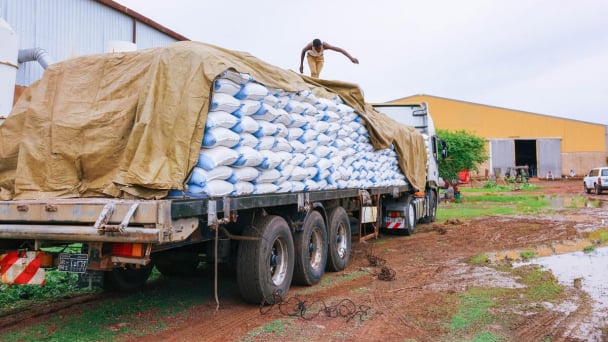
(VAN) In 2024, over 295 million people across 53 countries and territories faced acute hunger—an increase of almost 14 million people compared to 2023, while the number of people facing catastrophic levels of hunger reached a record high.

(VAN) World Environment Day 2025 (June 5) carries the theme 'Beat Plastic Pollution' continuing to emphasize the global urgency of addressing the plastic waste crisis.
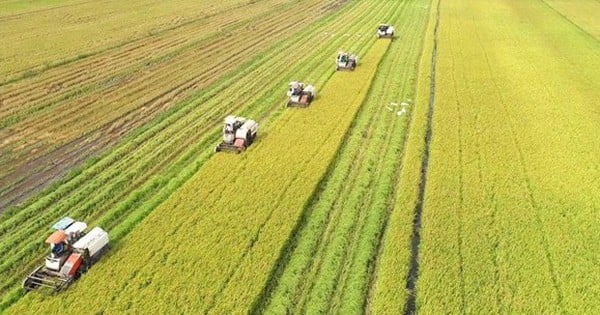
(VAN) This was the assessment shared by experts at the workshop titled 'Assessing the Role and Potential of Low-Emission Rice Production Systems in Vietnam,' held on the morning of May 19.